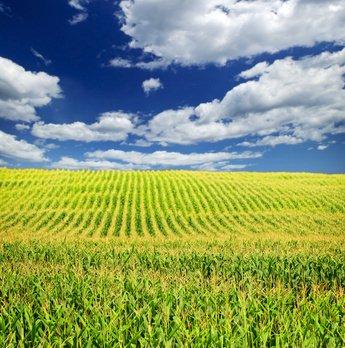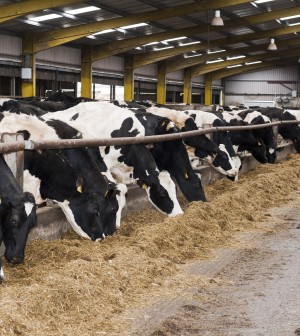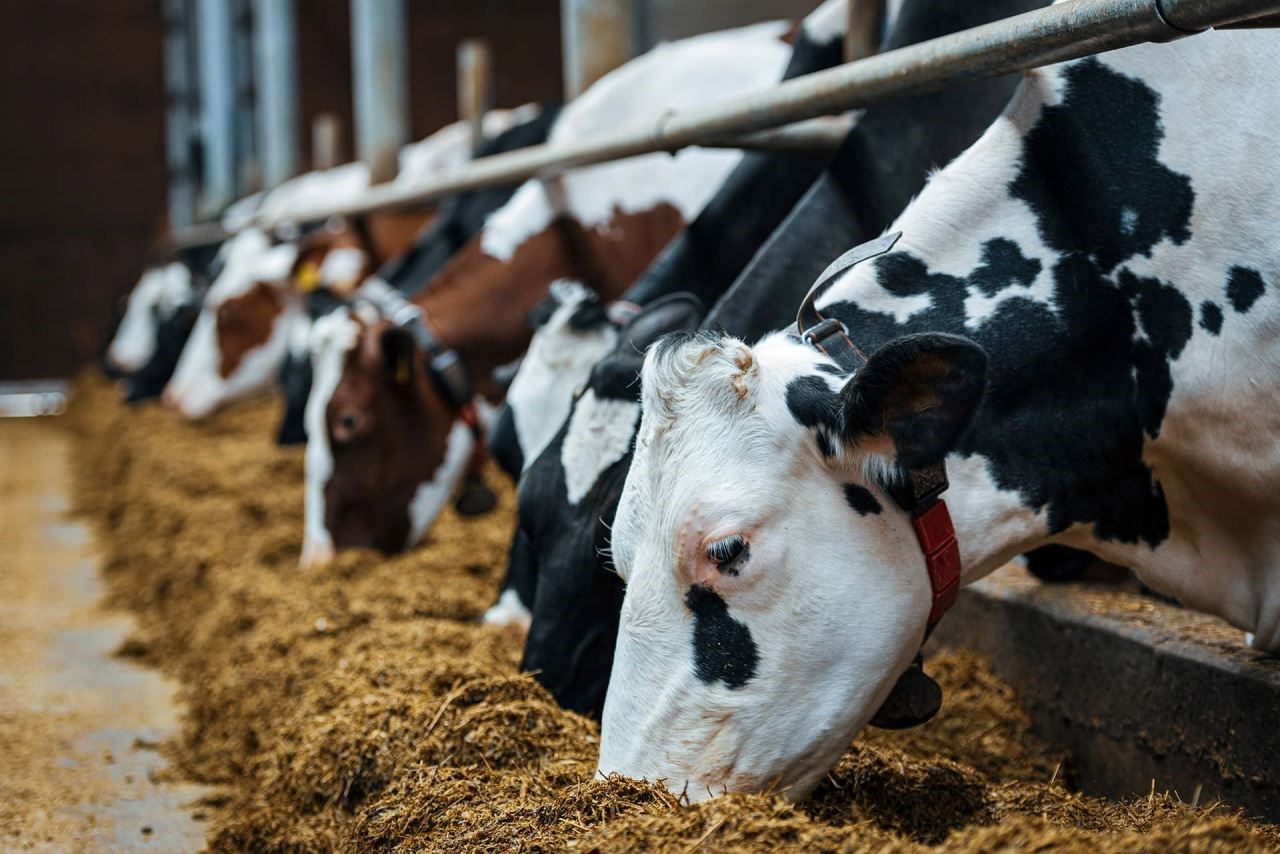 We have never seen a year when budgeting has been so challenging. Every time we talk to the trade the cost of raw materials has risen yet again! Fortunately, milk price is eventually catching up, and those who have secured feed at competitive prices will have a chance to reduce their debt and build some resilience into the business this year.
We have never seen a year when budgeting has been so challenging. Every time we talk to the trade the cost of raw materials has risen yet again! Fortunately, milk price is eventually catching up, and those who have secured feed at competitive prices will have a chance to reduce their debt and build some resilience into the business this year.
But keeping an eye on all costs is a must currently, and with this in mind we have recalculated our cost of forage production to see how they have changed.
The table below shows the summary of the cost of producing grass silage on an intensive 4 cut system, maize silage and wholecrop.
The following assumptions have been made:
- An opportunity rent of £370/ha.
- The price of fertiliser as quoted at end July by AHDB (AN at £793/t, MOK at £766/t and TSP at £925).
- No allowance has been made for nutrients from slurry – but no cost of slurry spreading is included either. This means we are looking at the worst case scenario.
- No allowance is made for silage additive as this varies greatly between farms.
- Contractor costs are as per the NAAC Contracting Survey.
- For the purposes of this exercise, we have assumed a conventional plough, power harrow, roll and drill for crop establishment. But we have looked at the effect on price per tonne of using a Sumo for maize establishment and a power harrow drill combination for wholecrop establishment. As the grass is a 5 year ley we have assumed it will be ploughed conventionally to ensure a good establishment, but your land may not need this.
The table below summaries the cost of producing the individual forages:
| 4 Cut Grass Silage |
Maize Silage | Wholecrop Wheat Silage |
|
|---|---|---|---|
| DM % | 33 | 33 | 37 |
| Tonnes Dry Matter Produced/Ha |
15 | 13 | 13 |
| Cost per tonne Fresh |
56.82 | 44.86 | 56.55 |
| Cost per tonne Dry Matter |
172.17 | 135.94 | 152.85 |
| CP % | 14 | 8 | 10 |
| ME | 11.5 | 11.5 | 10.5 |
| £/MJ ME | 14.97 | 11.82 | 14.56 |
| £/% CP | 12.30 | 16.99 | 15.28 |
The benchmark we have used for years of £30/t for grass silage and £35/t for maize silage has been blown out of the water this season!!
The cost of making grass silage on a 4 cut system has nearly doubled this year, partly due to the price of fertiliser, but also the contractor charges per cut of silage made. By only cutting 3 times and allowing the last cut to bulk up a bit further will reduce the cost of the silage by approximately £5/tonne dry matter, but of course you won’t quite have the quality of silage on the 3rd cut, and you would have to balance this with bought in feeds in the diet which would cost more.
Maize silage costs have also risen significantly, but only by 28%, largely due to the fact it is a one cut regime and not a multi cut system. By establishing the maize with a Sumo/strip till you would save approximately £10/t DM on the cost of producing it. But not all ground will be suitable for this, and the last thing you should do is to compromise yield per hectare by not getting soils right before drilling. You do not get the protein with maize silage and therefore the cost of importing the protein onto the farm needs to be factored in.
Making wholecrop silage has gone up the least mainly because the contractor costs in establishment and the rise in seed costs are less. By establishing the wheat with a harrow/drill combination you can save around £8/t DM on the cost of growing it. But again it can only be done if your land and soil type is suitable. Only good quality wholecrop should be considered for milking cow diets. However, wholecrop can be useful in youngstock/dry cow/beef diets, particularly those on loose bedding where the dung becomes firmer and you save on bedding costs too!
 BALANCING OVERALL DIET COST
BALANCING OVERALL DIET COST
Forage cost is only one part of the diet, and it is the overall diet cost that will determine how profitable your milk production will be.
The following table shows the overall cost of a variety of diets, using different forages and balancing them with various cost competitive non forage feeds.
All diets are balanced equally in terms of energy and protein and will provide a diet to cover maintenance + 30 litres milk.
| Good Grass Silage only |
Good Grass Silage + Maize Silage |
Good Grass Silage + Wholecrop |
Average Grass Silage only |
|
|---|---|---|---|---|
| Grass Silage Good |
42 | 21 | 24 | |
| Grass Silage Ave | 42 | |||
| Maize Silage | 21 | |||
| WWC Silage | 17 | |||
| Straw | 0.3 | 0.3 | 0.3 | |
| Caustic Wheat | 6.0 | 3.0 |
4.75 |
6.0 |
| Rapeseed Meal | 1.4 | 3.5 | 2.5 | 3.5 |
| Soya Hulls | 0.9 | 1.25 | 1 | |
| Mins/limestone | 0.25 | 0.25 | 0.25 | 0.25 |
| Total Diet Cost £/day |
4.99 | 4.72 | 4.97 | 5.45 |
The maize silage diet, despite having to purchase in extra protein, is the most cost effective in terms of overall cost. It also has the best overall starch and sugar content, which is a key driver of milk production. But if your farm is not suitable to grow maize, and you can only achieve 25t/ha maize yields on your farm then the economics would look different.
The cost of the grass silage or the grass silage and wholecrop diet are very similar, but with wholecrop in the diet you are likely to get better overall dry matter intakes, and the starch and sugar level is better, so you are likely to achieve more milk than on grass silage alone.
The table also shows the impact of making good quality grass silage (11.5 MJ ME; 16%CP) compared to average quality grass silage (10.5Mj ME; 12%CP). By making good quality silage you can reduce your overall feed cost by 46p/cow/day – a total of £83/cow over a 6 month winter.
But these are average figures, and as we know there is no such things as an average farm!
If you would like to calculate your own forage costs, then we have developed a spreadsheet that will do it quick and painlessly. So just ask your Douglas Green farm consultant at your next visit and we can help.
Do you know what it costs to produce forage on your own farm?
Reviewing forage costs and forage budgeting can help you fine tune your management and maximise your profits. We have huge experience developing dairy businesses by combining technical and business solutions. Get in touch - we would be delighted to help. Call our office on 01666 817278
100% independent, 100% for you.



